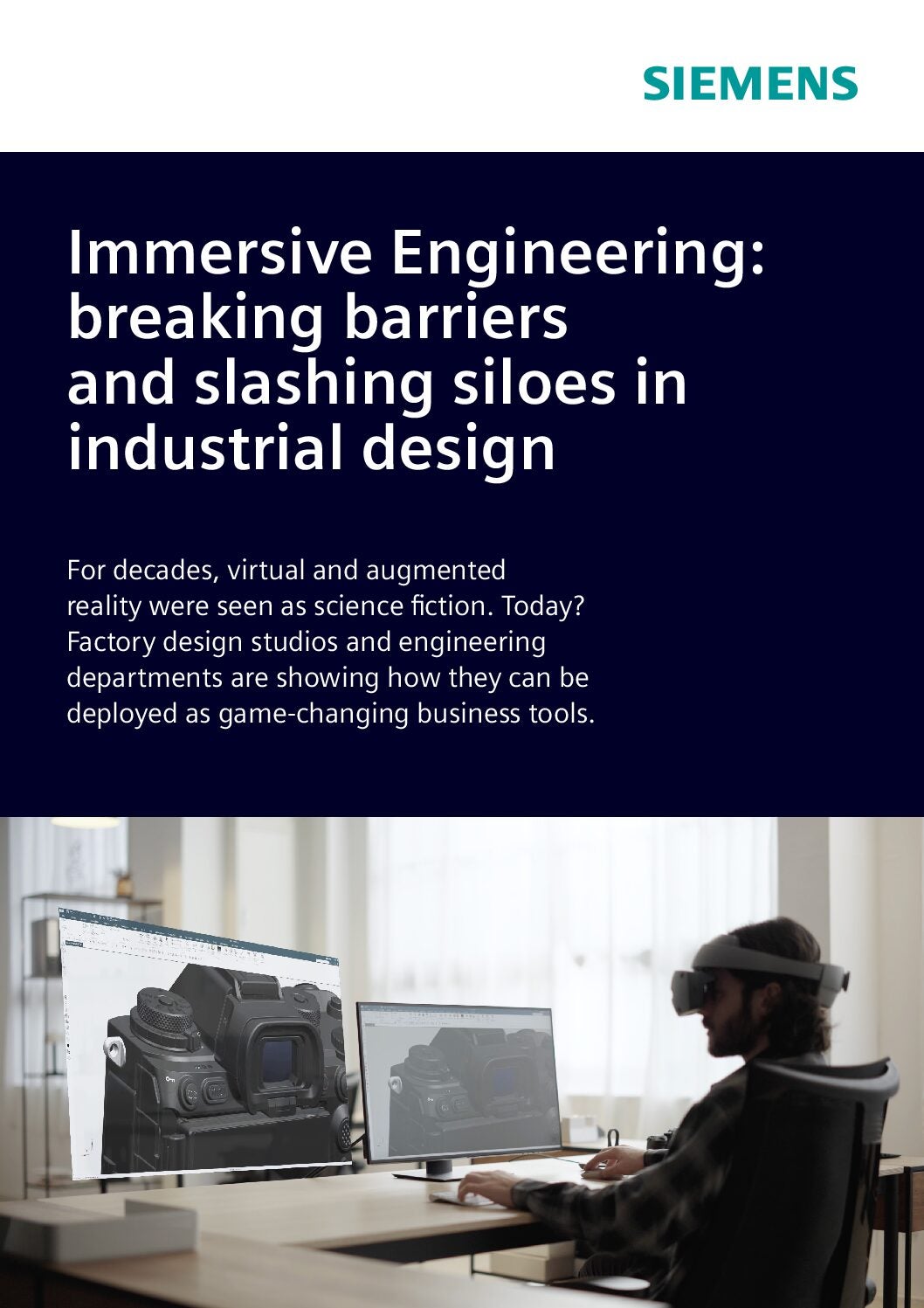
In a post-covid world where designers can work remotely, the industrial world faces a new conundrum: collaborating effectively on a shared network without ever sharing the same room.
A digital drawing or a standard Teams call can only go so far when the intricate design process of a jet engine, production robot or military-grade hardware is at stake.
New, cutting-edge engineering solutions are needed – ones standing at the confluence of extended reality (XR), real-time data integration, and human-centric design. These are built from the ground up to serve the world’s most advanced engineers as comprehensive, simulated, shared working environments. Stakeholders from design, production, maintenance, and marketing can interact and collaborate – at scale and in sync.
Collapsing borders with shared immersion
What are the problems that Immersive Engineering can help to solve? Over reliance on clay modelling, jet-lagged meetings of multidisciplinary teams crowded around whiteboards; these are old ways of working. Engineers, designers and clients – wherever they are based – can and should be able to collaborate at the click of a button. And Immersive Engineering is enabling global companies to do just this. Inside these immersive spaces, teams can gesture, manipulate, and iterate as if in the design studio itself.
Analysis from Siemens suggests teams using such platforms are already seeing productivity gains of up to 30% compared with previous benchmarks. The logic is compelling: fewer physical prototypes, less ambiguity, faster consensus. What used to be a cascade of prototype handovers is becoming a circle of real-time feedback.
The result is not just faster decisions but more efficient ones. Assembly technicians can flag ergonomic issues before they’re locked in. Clients can visualise options in full scale and offer real-time feedback. Architects can showcase lighting, materials, and spatial interactions in ways 2D drawings never could.
One early adopter, Natilus, a firm at the forefront of rethinking the economics of airfreight, said it best: “Immersive Engineering allows us to see our product at human scale, in real-time, before we’ve built it.” It’s a dramatic shift from static renderings to dynamic participation, collapsing the boundaries between once-isolated teams.
The solutions leading the market
Siemens’ NX Immersive Engineering is one example of a tech platform collapsing these boundaries. What they, in partnership with Sony, empowers engineers to virtually step inside their physical design studios. At the core is the digital twin – a live, data-rich model of a product that replicates its physical counterpart. Working in tandem with the Sony head-mounted display, it offers 4K resolution per eye and intuitive, ergonomically-designed controllers tailored for precision engineering tasks.
But the headset is just the access point. The real magic lies in NX’s fully integrated software suite. A single click pulls a model into the immersive environment. Any changes made – a dimension tweak, a material swap – propagate through the digital thread in real-time. And Siemens also offers a desktop mode for stakeholders without a headset, ensuring no one is left out of the room – virtual or not.
A typical immersive session might involve live markups, component movement, snapshot capture, and even virtual commissioning. NX Immersive Explorer enables instant design reviews with one click, eliminating the lag and rework that plague traditional visualization pipelines. With support for industry-standard export formats, XR assets flow effortlessly across platforms.
NX Immersive Designer lets you “design in 3D” – sculpting, modifying, and manipulating directly in the virtual workspace. This is the new real – where immersive visualization shortens timelines, collapses silos, and transforms how things are created. For firms yet to take the leap, Immersive Engineering can offer everything they need to propel them forward.
Download the whitepaper on this page to learn more.




